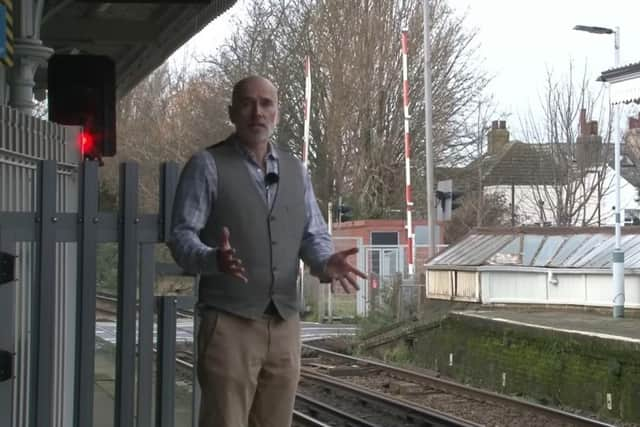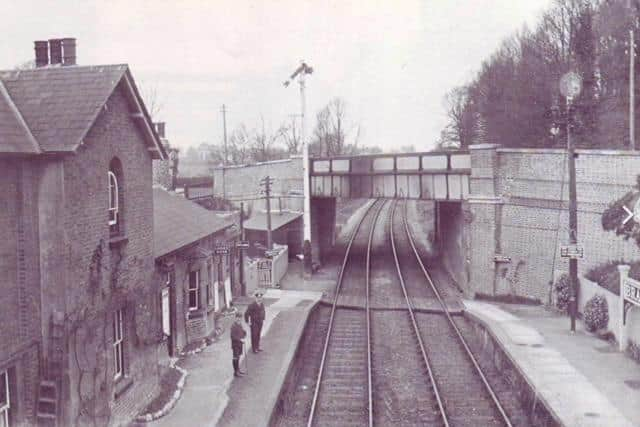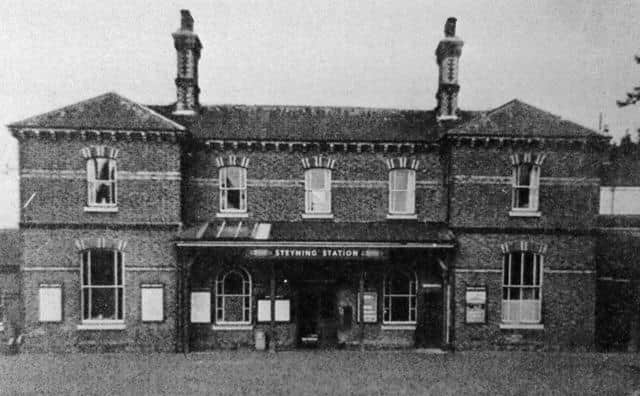Captivating new documentary will journey through the heart of Sussex’s railway heritage
and live on Freeview channel 276
Tracing the Rails, hosted by Stephen Cranford from BBC Radio Sussex, will be uncovering hidden stories along the Steyning Line to shine a light on the now vanished Shoreham to Horsham railway line.
Stephen, who lives in Worthing, has joined forces with Upper Beeding residents Chris Kirk and Louise Partridge for the series. It went into production in December and a pilot episode was released on YouTube on January 1, 2024.
Advertisement
Hide AdAdvertisement
Hide AdStephen said: "A demo was made ahead of the proper episodes to show people what we plan to do. This was released on YouTube and it’s already had around 24,000 views, 2,300 people have subscribed, and we have had hundreds of comments.
"There can’t be a resident of Bramber, Beeding or Steyning who isn’t aware of the former existence of a railway line that used to run through the area, either from seeing the path of the old line running next to the river, or from more obvious clues such as the surviving platforms at West Grinstead, or (even better) having memories of the trains they used to take themselves.
"There is a certain warm nostalgia about looking back at the romantic days of old steam trains which used to run up the Adur Valley, and nostalgia is certainly a wonderful thing when it comes to making TV shows."
The railway used to connect Shoreham to Horsham, serving six stations along the route - Bramber, Steyning, Henfield, Partridge Green, West Grinstead and Southwater. It was axed as part of the Beeching cuts in 1966, with only the southern part of the line carrying on for a few more years to serve the cement works in Upper Beeding.
Advertisement
Hide AdAdvertisement
Hide AdDirector Chris, a prolific film maker in past years, and producer Louise have discovered an Aladdin’s cave of documents, photographs and films which relate to the old line. Lots of images survive, not only of the old trains but also the buildings, rails and people who once worked on the railway.


Chris said: "We are both fascinated by our local history and heritage and for a long time we have walked and cycled part of the old line, which now forms part of the Downs Link.
“We always made a point of identifying parts of the old railway which survive to this day, and realised that if we were interested in it, maybe other people would be, too.”
Chris contacted Stephen, a long-term friend, to see if he would be interested in presenting the episodes and he 'bit his hand off'.
Advertisement
Hide AdAdvertisement
Hide AdStephen said: "I have always adored railways, so to get a job where I’m presenting on a subject I’m passionate about was a dream come true.”


Tracing the Rails will follow, step by step, the old line from Shoreham, right the way through to Christ’s Hospital, and railway historian Mike Jaimes will present historic cutaway features about how railways worked at the time the Steyning Line was operating.
Stephen said: "There are quite a few surprises. Did you know there is still some track at West Grinstead, hidden in the undergrowth? Also, the original brick railway bridge at Henfield is still there, buried under tonnes of soil. They never demolished it, they just covered it up.”
The pilot episode shows how the series will work, blending archive material with current day views and using drone footage to give a unique bird’s eye view of the stunning landscape.
Advertisement
Hide AdAdvertisement
Hide AdLouise said: "Using Chris’s skills in special effects, we’ve managed to mix shots of how it looks today, with carefully restored photos from the past. It really brings it to life and makes it much easier to understand what we’re looking at today."


Many people have shared old photos, films and memories but the team are always willing to have more. Email [email protected] visit www.tracingtherails.com for more information.
The six-part series Tracing the Rails will be filmed and released in 2024. It will be available to stream on YouTube.